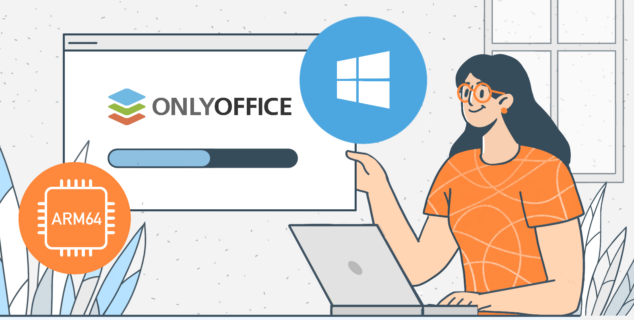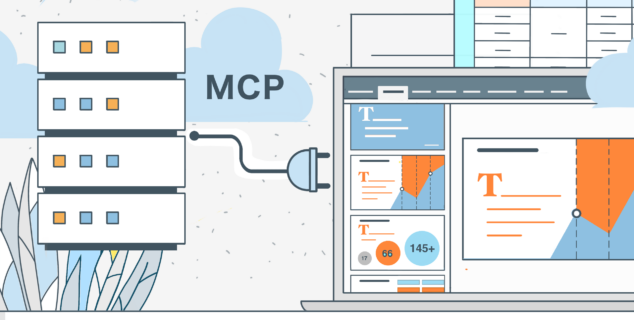How to be more eco-friendly with ONLYOFFICE
In today’s digital age, the push towards sustainability and environmental conservation is more critical than ever. One of the significant steps organizations can take to contribute to a greener planet is to go paperless. By providing a comprehensive set of tools for digital work, ONLYOFFICE significantly reduces the need for paper, thus saving trees and promoting eco-friendly practices. Here’s how ONLYOFFICE can help your organization go paperless and enjoy numerous benefits.

How did we get the idea of eco-friendly solutions and sustainability?
The idea of eco-friendly and sustainable offices gained significant momentum during the COVID-19 pandemic as businesses adapted to remote work. The global shift highlighted the inefficiencies and environmental impact of traditional paper-based offices. Inspired by the themes of World Environment Day, which emphasizes the need to take action for a greener planet, we realized that transitioning to digital, paperless offices is not only beneficial for productivity but also crucial for reducing our carbon footprint and fostering a sustainable future.
Eco-friendly: what is it about?
Being eco-friendly means making choices that minimize harm to the environment. For individuals, it involves adopting habits like recycling, reducing waste, and conserving energy. For businesses, it means implementing sustainable practices such as going paperless, using renewable energy, and reducing carbon emissions. For everyone on Earth, it means collectively striving to protect natural resources, reduce pollution, and create a healthier planet for future generations. By embracing eco-friendly practices, we contribute to the well-being of our planet and ensure a sustainable future for all. Businesses must integrate these practices into their corporate culture by transitioning to digital, paperless, eco-friendly offices.
What means paperless office?
One of the main benefits of a paperless office is more productive task management. This can save you a significant amount of time during the workday, allowing you to work more efficiently. But it’s not all. Let’s make it clear.
- Saving Money
Implementing paperless options can help your organization save money on various paper-related costs, such as:
– Storage Costs: Digital files don’t require physical storage space, reducing the need for filing cabinets and folders. The saved funds can be allocated to higher-priority expenses.
– Printing Costs: With most documents in digital format, the use of paper and ink decreases, lowering overall printing costs in the office.
– Operational Costs: Paperless offices often have a more streamlined workflow, granting quicker access to important information and saving time and money.
– Data Recovery Costs: Recovering lost data is typically cheaper and faster with digital backups compared to reprinting multiple copies of a document.

- Increasing Productivity
Paperless offices can boost productivity by providing digital access to files on personal work devices. This allows employees to focus more on high-priority tasks, such as client communication. Digital databases with search functions or clear indexes streamline document retrieval, saving time and enabling employees to concentrate on more important activities.
- Saving Space
Transforming into a paperless office saves physical space. For example, removing filing cabinets and copy machines can free up entire rooms, which can then be repurposed for other uses, such as break or meeting rooms.
- Simplifying Information Sharing
Digitizing paperwork makes it easier to share information with clients and colleagues. Sending digital contracts or annotated PDFs can be faster and more efficient than distributing hard copies. Employers should provide training to ensure the transition to a paperless office improves both internal and external communication.
- Protecting Private Information
Digital files can enhance the protection of private information. Companies can use encryption, authentication, or other data security practices to secure sensitive information. Clients may feel more secure knowing that robust security measures are in place to protect their privacy.
- Helping the Environment
Reducing or eliminating paper use in the office benefits the environment by generating less waste and conserving natural resources. Digitizing office operations is a sustainable practice that contributes to environmental conservation.
- Increasing Access
A paperless office increases access to work materials from anywhere. For example, an events coordinator meeting a client outside the office can access a budget proposal on their laptop instead of carrying a printed copy. This flexibility also benefits team members working in different locations, enabling remote collaboration and task completion through digital platforms.
Paperless office vs eco-friendly office. The same or not?

Yes and no at the same time. Let’s discover how to organize an eco-friendly business. Here are the main practices to consider.
Implement a Paperless Office
- Digitize Documents: Use digital tools to create, share, and store documents. This reduces paper waste and saves costs associated with printing and storage.
- Electronic Signatures: Adopt e-signature solutions for contracts and agreements to eliminate the need for printing, signing, and scanning documents.
Reduce Energy Consumption
- Energy-Efficient Appliances: Invest in energy-efficient office equipment and appliances. Look for Energy Star-rated devices.
- Smart Lighting: Install LED lighting and use smart systems to automatically turn off lights in unoccupied areas.
- Optimize Heating and Cooling: Use programmable thermostats to control the office temperature efficiently.
Promote Sustainable Transportation
- Remote Work: Encourage telecommuting to reduce the carbon footprint associated with commuting.
- Public Transport Incentives: Provide incentives for employees to use public transport, carpool, or bike to work.
Reduce Waste
- Recycling Programs: Set up comprehensive recycling programs for paper, plastics, and electronic waste.
- Reusable Products: Use reusable office supplies like refillable pens, recycled paper, and durable kitchenware instead of disposables.
Sustainable Procurement
- Eco-Friendly Suppliers: Partner with suppliers that prioritize sustainability in their products and operations.
- Green Office Supplies: Purchase office supplies made from recycled or sustainable materials.
Energy from Renewable Sources
- Renewable Energy Contracts: Switch to renewable energy providers or invest in on-site renewable energy sources like solar panels.
- Carbon Offsetting: Purchase carbon offsets to compensate for emissions that cannot be eliminated.
Water Conservation
- Low-Flow Fixtures: Install low-flow faucets and toilets to reduce water usage.
- Water Management: Monitor and manage water usage in the office to identify and fix leaks promptly.
Sustainable Office Design
- Green Building Standards: Design and build office spaces according to green building standards like LEED or BREEAM.
- Indoor Plants: Incorporate indoor plants to improve air quality and provide a healthier work environment.
Employee Engagement
- Eco-Friendly Initiatives: Encourage employees to participate in eco-friendly initiatives like recycling drives, tree planting, and sustainability workshops.
- Sustainability Training: Provide training on sustainable practices and the importance of environmental responsibility.
Corporate Social Responsibility (CSR)
- Community Programs: Engage in community programs focused on environmental conservation and sustainability.
- Sustainability Reporting: Publish sustainability reports to communicate your environmental efforts and progress to stakeholders.
By adopting these practices, businesses can significantly reduce their environmental impact, improve operational efficiency, and foster a culture of sustainability within their organization.
How to make your digital business even more eco-friendly and green?

By implementing these strategies, digital businesses can significantly reduce their environmental impact, contribute to sustainability goals, and promote a greener digital ecosystem.
Optimize Data Centers
- Energy-Efficient Servers: Use energy-efficient servers and hardware that consume less power.
- Renewable Energy: Power data centers with renewable energy sources such as wind, solar, or hydroelectric power.
- Server Virtualization: Implement server virtualization to reduce the number of physical servers needed, thus decreasing energy consumption.
Green Web Hosting
- Eco-Friendly Hosting Providers: Choose web hosting providers that use renewable energy and have strong sustainability practices.
- Data Center Location: Select data centers in regions with cooler climates to reduce the need for energy-intensive cooling.
Optimize Website Performance
- Efficient Coding: Write efficient code to reduce the load on servers and improve website performance.
- Content Delivery Networks (CDNs): Use CDNs to distribute content efficiently, reducing the energy needed to serve web pages to users worldwide.
- Image and Video Optimization: Compress images and videos to reduce their file size and the bandwidth required to load them.
Reduce Digital Waste
- Cloud Storage: Utilize cloud storage to reduce the need for physical data storage devices.
- Data Management: Regularly clean up and archive old data to reduce storage requirements and energy consumption.
- E-Waste Recycling: Properly recycle old and unused electronic devices and components.
Remote Work and Virtual Meetings
- Remote Work Policies: Encourage remote work to reduce the carbon footprint associated with commuting.
- Virtual Collaboration Tools: Use video conferencing and collaboration tools to minimize the need for business travel.
Green Software Development
- Sustainable Coding Practices: Adopt sustainable coding practices that improve the efficiency and performance of software applications.
- Energy-Efficient Algorithms: Use energy-efficient algorithms to minimize computational power and resource usage.
- Regular Updates: Keep software updated to ensure optimal performance and energy efficiency.
Sustainable Product Design
- Eco-Friendly Design Principles: Design digital products with sustainability in mind, ensuring they require minimal resources to operate efficiently.
- User Education: Educate users on how to use digital products in an energy-efficient manner.
Digital Marketing
- Sustainable Content: Create and distribute digital content in a way that minimizes energy usage, such as optimizing email campaigns and reducing the size of digital assets.
- Green SEO: Implement green SEO practices that reduce the energy consumed by search engines when crawling and indexing web pages.
How to build your green business?
Transitioning to digitalization presents several challenges that businesses must address.
Employees accustomed to paper-based processes may resist transitioning to digital systems, necessitating effective change management strategies to encourage adoption. Ensuring the security of digital documents is crucial to prevent data breaches and unauthorized access. Implementing robust cybersecurity measures is essential to protect sensitive information.
The initial investment in digital tools and infrastructure can be significant, requiring careful budgeting and resource allocation to cover setup costs effectively. Staff need proper training to use new digital tools efficiently. Providing comprehensive training programs ensures employees are proficient in utilizing digital systems and enhances productivity during the transition period.
Addressing these challenges proactively is essential for successful digitalization and reaping the benefits of improved efficiency, accessibility, and data management.
Opt for secure professional solutions

Use ONLYOFFICE products to organize your eco-friendly infrastructure. Here are several points how ONLYOFFICE can help your organization go greener and enjoy numerous benefits.
Digital Document Management
- Creating and Editing Documents:
ONLYOFFICE offers robust online editors for text documents, spreadsheets, and presentations. These tools allow users to create and edit documents digitally, eliminating the need for printed materials. With support for various formats, including Microsoft Office and OpenDocument, ONLYOFFICE ensures compatibility and ease of use.
- Real-Time Collaboration:
Gone are the days of printing multiple copies for review and collaboration. ONLYOFFICE’s collaborative features like real-time co-editing, commenting, and version history features enable teams to work together seamlessly on documents without any physical copies. This not only speeds up the collaboration process but also significantly reduces paper waste.
Streamlined Communication
- Integrated Email and Messaging:
The integrated email client in ONLYOFFICE allows users to manage all their communications in one place. By storing and managing emails electronically, organizations can avoid printing emails and attachments, thus saving paper. Additionally, the built-in chat and messaging tools facilitate instant communication without the need for printed memos or notices.
- Online Meetings and Webinars:
ONLYOFFICE supports online meetings and webinars, which are excellent alternatives to in-person meetings that often require printed agendas, handouts, and notes. By conducting meetings online, participants can share and view documents digitally, further contributing to paper conservation.
Efficient Project Management
- Digital Task and Project Management:
The project management module in ONLYOFFICE allows users to create, assign, and track tasks digitally. With features like Gantt charts, time tracking, and milestone setting, teams can manage their projects efficiently without the need for printed schedules, reports, or plans.
- CRM and Sales Management:
ONLYOFFICE’s CRM system helps businesses manage customer relationships and sales activities electronically. By maintaining digital records of contacts, interactions, and transactions, organizations can reduce the need for printed customer files and sales documents.
Secure and Accessible Storage
- Cloud and On-Premises Storage:
ONLYOFFICE provides secure cloud and on-premises storage solutions, ensuring that all documents are stored electronically and can be accessed from anywhere. This eliminates the need for physical filing systems and printed backups, thereby saving a considerable amount of paper.
- Electronic Signatures:
The ability to sign documents electronically within ONLYOFFICE means that contracts, agreements, and forms can be signed and shared without ever being printed. This not only speeds up the signing process but also reduces paper consumption.
Eco-Friendly Business Practices
- Reducing Carbon Footprint:
By embracing ONLYOFFICE’s paperless tools, organizations can significantly reduce their carbon footprint. Fewer printed documents mean less demand for paper, which in turn means fewer trees being cut down. Additionally, reducing the need for physical storage and transportation of documents contributes to lower greenhouse gas emissions.
- Promoting a Green Culture:
Adopting ONLYOFFICE promotes a culture of sustainability within organizations. Employees become more aware of the environmental impact of their actions and are encouraged to adopt other green practices, such as reducing energy consumption and recycling.
Conclusion
ONLYOFFICE provides a comprehensive suite of tools that not only enhance productivity but also support environmental conservation efforts. By enabling organizations to manage their documents, communications, and projects digitally, ONLYOFFICE plays a crucial role in the move towards a paperless workplace. This transition not only saves trees but also promotes a sustainable and eco-friendly business environment.
Choose ONLYOFFICE, go paperless, and take a significant step towards saving our planet.
Create your free ONLYOFFICE account
View, edit and collaborate on docs, sheets, slides, forms, and PDF files online.


